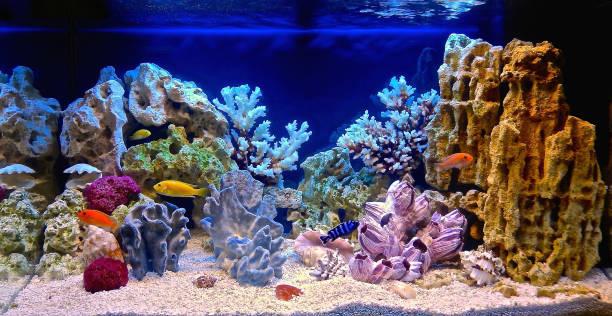Choosing the Best Coral for Reef Tanks
As you gaze at the colorful corals swaying gently in your reef tank, you’re filled with awe and pride at the miniature ocean ecosystem you’ve created. Yet after months or years, that initial thrill can fade as your tank’s inhabitants become familiar. Breathe new life into your underwater sanctuary by going beyond the norm. Venture into uncharted waters to discover uncommon corals that will not just survive, but thrive magnificently in your reef environment. With a spirit of exploration and willingness to provide specialized care when needed, you can cultivate a one-of-a-kind collection of rare beauties. Let your reef become a showcase of corals that elicit gasps of delight from you and visitors alike. The vibrant hues and exotic shapes of these unique specimens will reignite your passion for the captivating world with the best coral for reef tank.
Uncommon Corals That Thrive in Captivity
Reef tanks provide the perfect environment for many types of coral to thrive,
but some are better suited than others. When selecting coral, consider the following:
– **Hardiness**: Choose coral that can withstand a range of water conditions like bubble coral or finger leather coral. They adapt well to changes in lighting and water flow, ideal for beginners.
– **Aggressiveness**: Avoid fast-growing stony corals that can outcompete other species for space and light. Opt instead for soft corals like sea fans that peacefully co-exist.
– **Feeding needs**: Coral that requires frequent target feeding like torch coral demands more work. Select coral that can subsist on light and dissolved organics alone, such as mushroom coral or zoanthids.
– **Placement**: Choose coral with similar light and flow needs and place them together. For example, put high-light stony corals on upper rockwork and low-light soft corals on lower levels. This makes it easier to provide the proper conditions for each coral type.
– **Color and form**: Select coral that will enhance your tank’s aesthetics. The reds and greens of zoanthids, the flowing branches of sea fans, the intricate folds of brain coral—the options for a visually stunning reef tank are endless.
By considering a coral’s characteristics and requirements, you can choose the best species for your reef tank and provide a thriving home for these fascinating creatures. Their vibrancy and diversity will bring your underwater world to life.
Caring for Your Reef Tank’s Unique Corals
When setting up a reef tank, many aquarists choose common stony corals like acropora, pocillopora or montipora species to ensure success. However, for those looking to create a unique environment, several uncommon corals can thrive and add interest.
– Dendronephthya soft corals, also known as carnation or tree corals, are beautiful and do well in captivity with medium lighting and flow. They come in a variety of bright colors like red, yellow and purple. Place them on rocks or plugs and feed them regularly with coral foods high in lipids and amino acids.
– Favia corals are large polyp stony (LPS) corals that are easy to care for but not commonly found in home aquariums. They need stable water conditions, strong lighting and bi-weekly feeding. Favia come in green, tan and brown shades and make an impressive centerpiece.
– Bubble corals (physogyra) are dramatic LPS corals that form bubbly mounds. They have special lighting and flow needs but are quite striking. Physogyra expand and contract their polyps, especially during feeding, resembling blooming flowers.
– Tubastrea corals are sun-loving LPS corals with long polyps that emerge at night. Often referred to as sun corals, they come in fluorescent shades of yellow,green and orange. Feed tubastrea shrimp, fish eggs, and microalgae several times a week.
With the proper care and conditions, the uncommon corals described above and others can make a gorgeous addition to a home reef aquarium. Their special qualities are well worth the extra effort for any hobbyist looking to create a unique underwater habitat.


